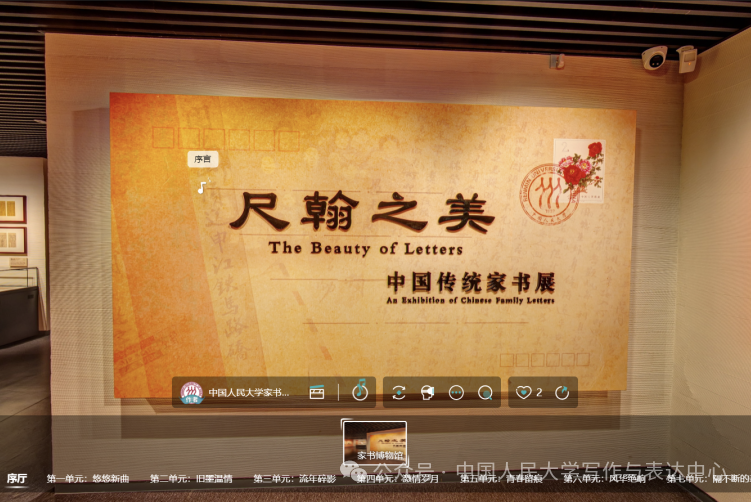RUC Launches Virtual “Family Letters Museum” on International Museum Day
How Does a Family Letter Weigh?
It may be as Light as a Feather.
Writing a pale yellow letter paper.
It may be as heavy as a Mountain.
Embodying the Hearts of Steel in Wars
The Yearning for Family in Seperation
And the Warmth of Details in Ordinary

In
celebration of the 49th International Museum Day, Renmin University of China
(RUC) has unveiled its new online VR exhibition: the Family Letters Museum,
offering a deeply emotional and immersive cultural journey through history,
memory, and personal correspondence.
Jointly produced under the guidance of the Department of Language Application Administration, Ministry of Education of the People’s Republic of China, the exhibition was developed by the Museum of RUC, the National Language Promotion Base (Renmin University of China), and the School of Liberal Arts. It also marks the Family Letters Museum’s entry into the Chinese Language and Culture Digital Museum platform.
This year’s International Museum Day theme, “Museums for Education and Research in a Rapidly Changing World”, finds vivid expression in this VR experience. Combining cutting-edge technology with intimate human stories, the exhibition brings century-old letters to life at the tap of a screen.
Exhibition Empowered by AI: An Immersive View of Family Letters in Convenience
l VR Technology: Visitors can explore a 360-degree panoramic recreation of the museum’s exhibition space, featuring weathered letters, vintage furnishings, and interactive digital displays.
l Immersive Interaction: By clicking on icons, users can access expert commentary, zoom in on the intricate strokes of original manuscripts.
l Multiple Dimensions Details: Scan the QR code and watch behind-the-scenes documentaries and short films that breathe new life into these historical texts.
Highlights of the Exhibition
Among the museum’s most treasured items is a collection of letters from Chen Duxiu, co-founder of the Communist Party of China, to Hu Shi and others. Donated by Renmin University alumni in 2009 for 5.544 million yuan to prevent them from being lost overseas, these documents capture critical ideological debates surrounding the New Youth magazine and mark a turning point in China’s intellectual history.
Other standout exhibits include:
- Letters of Liang Qichao to Hu Shi, offering insight into early modern China’s ideological transformations.
- A wartime letter from martyr Zhao Yiman, recovered from Japanese archives, still bearing the visible creases from her grip.
- A 1975 cross-strait family search letter, which traveled from Taiwan to the U.S. and finally reached relatives in mainland China, decades after national division.
- A Tang Dynasty housewife’s note about tea preparation, predating even Lu Yu’s Classic of Tea, reflecting ordinary life with touching warmth.
- A Korean War-era soldier’s illustrated letter, in which Li Zhengming combined childlike drawings with heartfelt words: “I will win a medal and meet Chairman Mao!”
More Than Words: A Living Archive of the Nation
The exhibition tells not only stories of individuals but also chronicles the evolution of Chinese society. From the battlefield reports, to the Ming–Qing merchants’ instructions, and to youth letters in the Great Northern Wilderness in northeast China, the VR gallery weaves a narrative across centuries of communication and emotion in China.
It also reveals how family letters reflect the unity of family and nation, the Intellectual debates, the patriotic sacrifices, and the everyday joys and sorrows converge in ink, forming a parallel history of modern China seen through the eyes of its people.
A Call to Action: Preserving Memory for Future Generations
At the exhibition’s close, a “Call for the Rescue of Family Letters” encourages the public to donate or deposit their old Family Letters—those fragile slips of paper tucked away in drawers, quietly carrying the weight of a family's story or the pulse of an era.
In the spirit of “seeing the person through their handwriting,” the Family Letters Museum invites everyone to join this cross-generational dialogue—where history is written not only in archives, but in the handwritten paper of love, hope, and perseverance.


